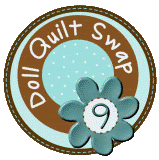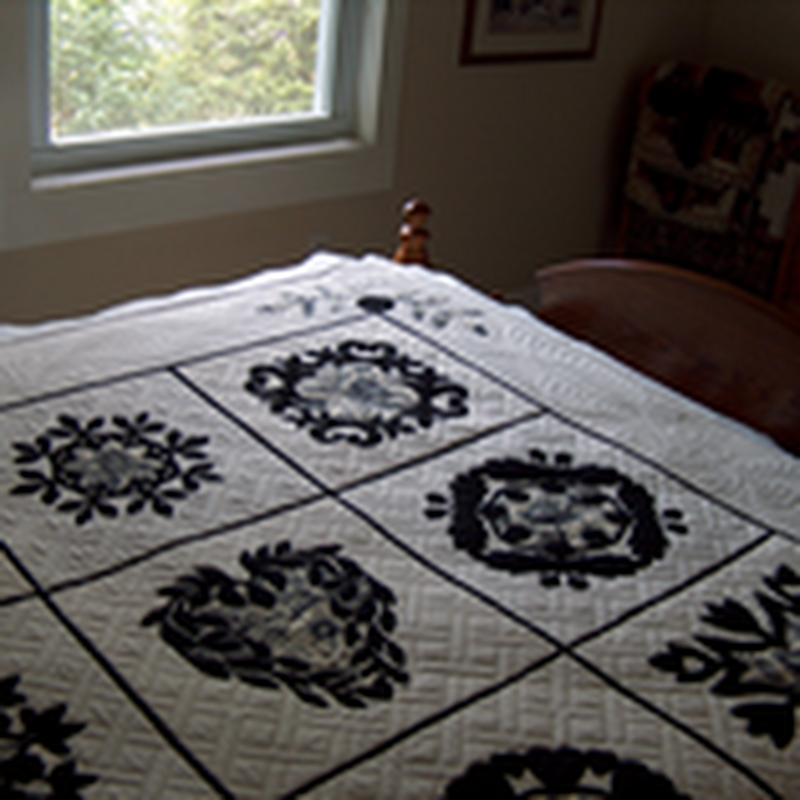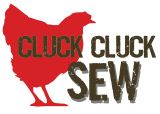The first step is to lay out all your blocks alternating print and solid blocks, get them arranged into the number of rows/columns you want, mix up the prints so you have a nice layout variation. Be sure and set all blocks the same way (so you have the little off-centered square towards the same side). Now to rotate the blocks. You've got four sides (I know, duh.) so leave your very first upper left corner block as is. Take the block to the immediate right and rotate it one quarter turn clockwise. Repeat across the row, each time rotating on quarter turn clockwise from the position of the block to its left. Next row, begin by rotating block one quarter turn clockwise. Then rotate the blocks down the row like you did before. Repeat with the next row, with the first block rotating one quarter turn from the position of the block immediately above it. Clear as mud? Here's what it will look like:
You'll now sew the blocks together. I like to take one row at a time, so as not to mix up my block placement. Right sides together, stitch, press. It's really that simple.
Here's one row, I had six blocks per row, so it made for nice even pairs sewing across.
Once you've sewn the blocks in pairs across, then start joining the pairs. (If you had an odd number of blocks in your row, be sure and sew the "extra" block on at this point. It's much easier than waiting to the end of a long row!) Don't forget to press.
Keep joining sections of the row until the row is complete. (Because I don't have a dedicated sewing room or design wall, I have to pick up my quilting sometimes. If you're like me, then be sure and label each row so you can put them back in order later. I use a small post-it note with the number pinned to the first block in each row. That way I always keep the rows in order and right side up!)
Because I was using white for my solid squares, I pressed the block seams towards the printed blocks for less show through (not that there's a lot when using Kona). This also means that for each row, the seams will be going in opposite direction from the one above and below it, so, when sewing the rows together, you should get them to abut together nice and tight making your corners all meet up nicely. Win-win!
Once your quilt top has been completely sewn together, squared up and pressed, you are ready to quilt. Select you backing fabric and batting, stack your quilt sandwich and baste in place. For this quilt, I simply pin basted the layers together. Be sure and give yourself some extra batting and backing beyond the edges of your quilt top--sometimes with a lot of quilting the batting and backing can sort of shrink on you!
Because I knew this was going to be a little girl's doll quilt, I wanted to keep the quilt very soft and flexible. So, I kept the quilting very simple--just stitch-in-the-ditch between all the blocks. For a larger quilt or larger blocks, you may want to quilt a bit more.
When the top is quilted, trim and bind. Here's another look at the finished Squared Away quilt, now residing in the bedroom of a lovely 7-year-old girl in Colorado.
Another look at the quilting between the blocks.
And the back, a bit of vintage fabric my mom passed on to me that I've been hoarding for a few years. It was good to share it finally!












































No comments:
Post a Comment